Table of Contents
Case study : CAN BUS Troubleshooting in Mercedes ML W164
Mercedes-Benz GL W164 DSR & ESP Warning Message
This case study examines the diagnostic and repair process of a Mercedes-Benz GL W164 that displayed several warning messages and operational issues. The vehicle was brought to a Mercedes-Benz dealership where a qualified technician used the Xentry diagnostic tool and multimeter to identify and resolve the issues.
Vehicle Information
Model: Mercedes-Benz GL W164
Symptoms:
– DSR (Direct Steer Response) warning message
– ESP (Electronic Stability Program) warning message
– Inoperative turn signals, wipers, back-up camera, and Parktronic system
Engine fan running continuously on high speed


Diagnostic Process
Initial Inspection and Diagnostic Report
– The technician connected the Xentry diagnostic tool to the vehicle.
– The diagnostic report indicated that the issues were related to a defective Central Gateway (CGW) module or a wiring issue.
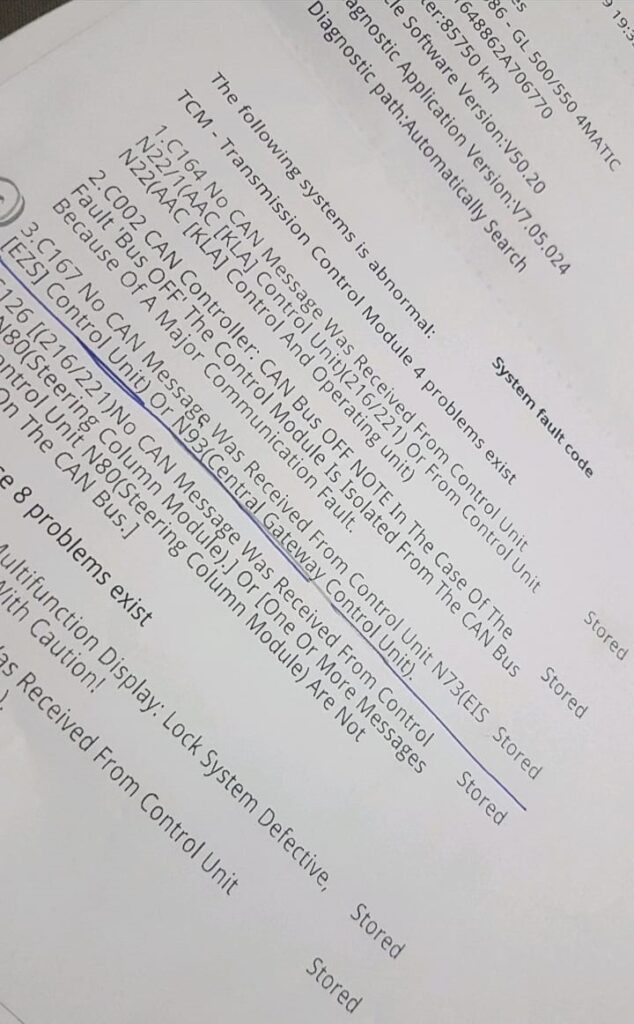
Physical Inspection
– The technician removed the seat and carpet to access the Central Gateway, amplifier, and Parktronic modules located beneath the seat.
– It was discovered that these components were submerged in water, leading to corrosion and oxidation in the wire harnesses.
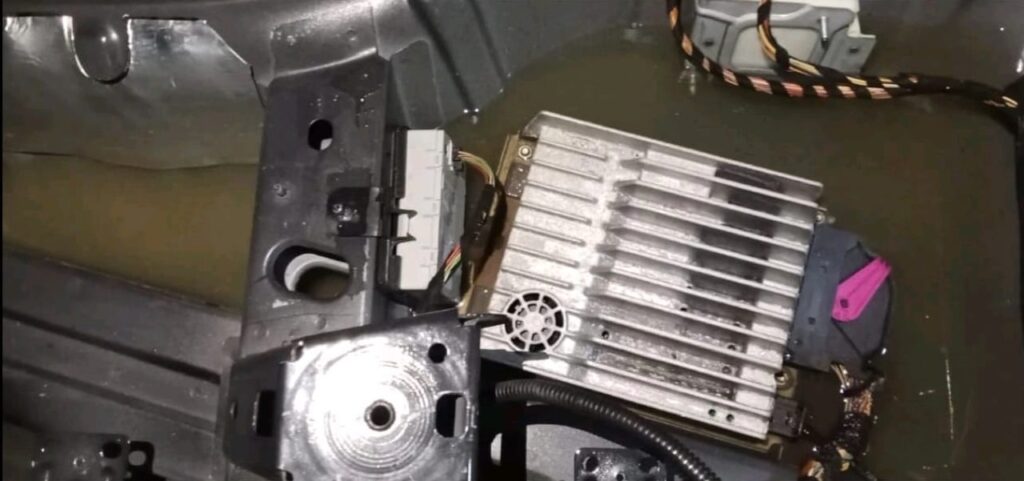
CAN Bus System Inspection
Utilizing a multimeter, the technician performed a detailed inspection of the CAN Bus system following the wiring diagram. This included checking the continuity and resistance of the CAN High (CAN-H) and CAN Low (CAN-L) wires.
Steps for CAN Bus Inspection:
1. Identify CAN Bus Wires: Locate the CAN-H and CAN-L wires using the wiring diagram.
2. Continuity Check: Measure the continuity of the CAN-H and CAN-L wires to ensure there are no breaks.
3. Resistance Measurement: Measure the resistance between CAN-H and CAN-L. The typical resistance should be around 60 ohms (for a 120-ohm terminating resistor at each end of the bus).
4. Voltage Measurement: With the ignition on, measure the voltage on CAN-H (approximately 2.5V to 3.5V) and CAN-L (approximately 1.5V to 2.5V).


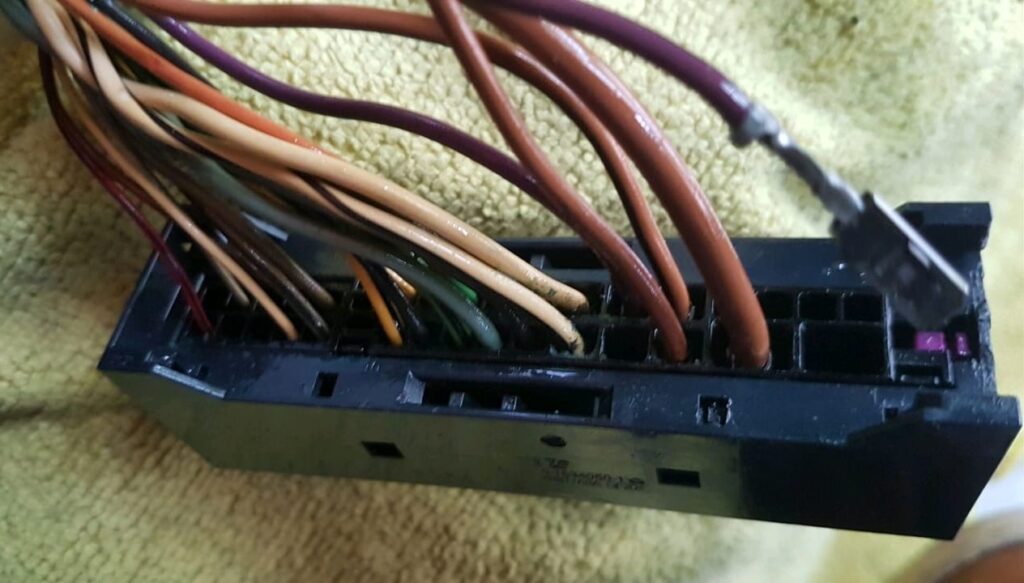
Findings
- Central Gateway Module (CGW): Although the CGW is sealed and remained unaffected, the water had reached the wire harnesses causing oxidation.
- Parktronic Module: The Parktronic module was identified as faulty due to water damage.
- CAN Bus System: The inspection of the CAN Bus system indicated that the continuity and resistance of the CAN wires were within normal ranges, but the oxidation on the connectors needed cleaning.

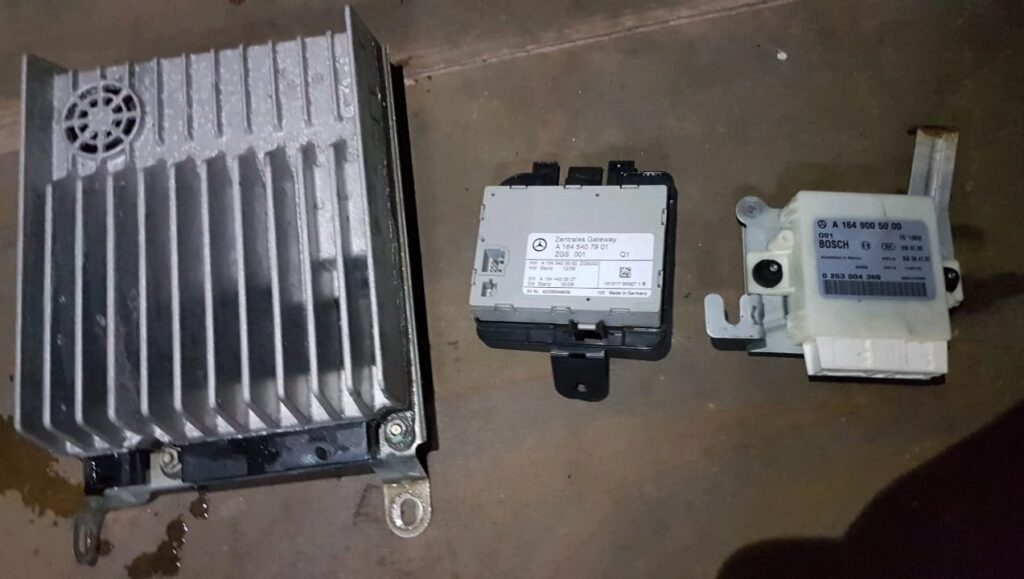
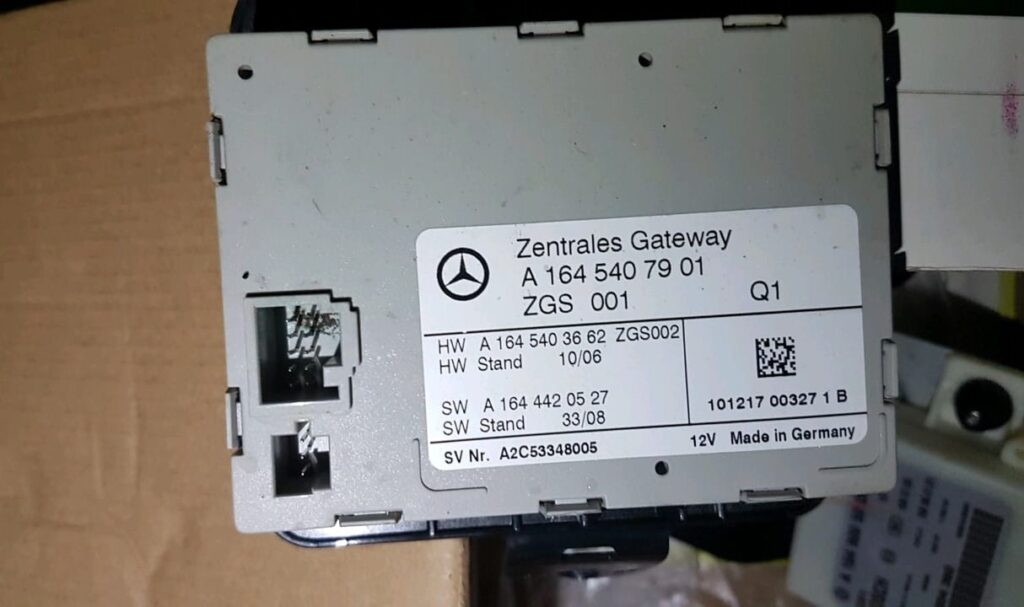
Repair Process
1. Replacement of the Parktronic Module
- The technician replaced the Parktronic module with a new unit.
- After replacement, the Parktronic system began functioning normally.
2. Addressing the Water Damage
- The technician dried out the affected area and cleaned the oxidized wire harnesses and connectors.
- Ensured that all connections were secure and free of corrosion.
3. CAN Bus System Verification
- After cleaning the connectors, the CAN Bus system was rechecked using the multimeter to confirm proper continuity, resistance, and voltage levels.
Outcome
- Resolution of Issues: The replacement of the Parktronic module and cleaning of the wire harnesses resolved the operational issues.
- Restored Functionality: The turn signals, wipers, back-up camera, and Parktronic system became operational again.
- Engine Fan: The continuous high-speed operation of the engine fan was also resolved as it was likely related to the electrical issues.
For more information about similar CAN bus faults, please refer to the following link;
Mercedes key not working ignition – Case study & solution
Conclusion
This case study highlights the importance of thorough diagnostics, including the inspection of the CAN Bus system, and physical inspection in resolving complex automotive issues.
The use of the Xentry diagnostic tool and the expertise of the technician were crucial in identifying the root cause of the problem and restoring the vehicle to normal operation. Proper maintenance and preventative measures are essential to prevent recurrence of such issues.
How to Troubleshoot a CAN Bus Communication Fault ?
1. Identify the symptoms
The initial step in addressing a CAN bus Troubleshooting is to identify its symptoms. The severity and location of the fault can lead to various indicators, including warning lights, error codes, reduced performance, or loss of functionality. For instance, a fault affecting the engine control unit might result in poor fuel economy, misfires, or stalling.
If the instrument cluster is affected, you may observe incorrect readings, flickering, or blank displays. Utilizing a diagnostic tool to scan the vehicle and retrieve relevant codes or messages is essential in this process.
2. Check the wiring and connectors
The next step is to examine the wiring and connectors of the CAN bus network. This network consists of two wires, CAN high and CAN low, which transmit differential signals between devices. These wires are linked by terminators, resistors that maintain proper voltage levels and prevent signal reflections. Physical wear, corrosion, moisture, or short circuits can damage the wiring and connectors.
Inspect the wiring for any signs of damage, such as cuts, cracks, or exposed wires, and check the connectors for loose, bent, or corroded pins. Additionally, use a multimeter to measure the resistance of the terminators, ensuring it is within the specified range.
3. Isolate the faulty device
The third step is to isolate the faulty device causing or affected by the CAN bus communication fault. The CAN bus network includes multiple devices, such as sensors, actuators, modules, and switches, that communicate with each other. A single faulty device can disrupt communication across the entire network or specific parts of it.
Use a diagnostic tool to identify which device is generating or receiving the error code or message. Additionally, use an oscilloscope or logic analyzer to monitor the CAN bus signals for any distortions, noise, or missing signals. Disconnect the suspected device to determine if the fault is cleared or reduced.

4. Test the faulty device
The fourth step is to test the isolated faulty device. This device may be malfunctioning due to internal or external factors, such as software, hardware, or configuration issues. Use a diagnostic tool to conduct a self-test or functional test on the device and observe if it responds correctly.
Inspect the device for physical damage, such as cracks, burns, or leaks. Compare the device’s specifications with the manufacturer’s standards to ensure they match. If the device fails any tests or does not meet the specifications, it should be replaced.
5. Verify the repair
The final step is to verify the repair and ensure the CAN bus communication fault is resolved. Reconnect the replaced or repaired device and check if the symptoms, codes, or messages have disappeared. Use a diagnostic tool to clear any stored codes or messages from the memory.
Employ an oscilloscope or logic analyzer to verify that the CAN bus signals are normal and consistent. Conduct a road test or simulation test to confirm the vehicle operates as expected. Document the repair process and report any findings or recommendations.
6. Prevent future faults
The sixth step is to prevent future faults and maintain the CAN bus network in good condition. Adhere to the manufacturer’s guidelines and recommendations for installing, configuring, and maintaining the CAN bus network and its devices. Avoid any unapproved or incompatible modifications, additions, or alterations to the CAN bus protocol.
Protect the wiring and connectors from physical, environmental, or electrical damage. Conduct regular inspections and tests to detect potential faults or issues early. Update the software or firmware of the devices as needed to ensure optimal performance.

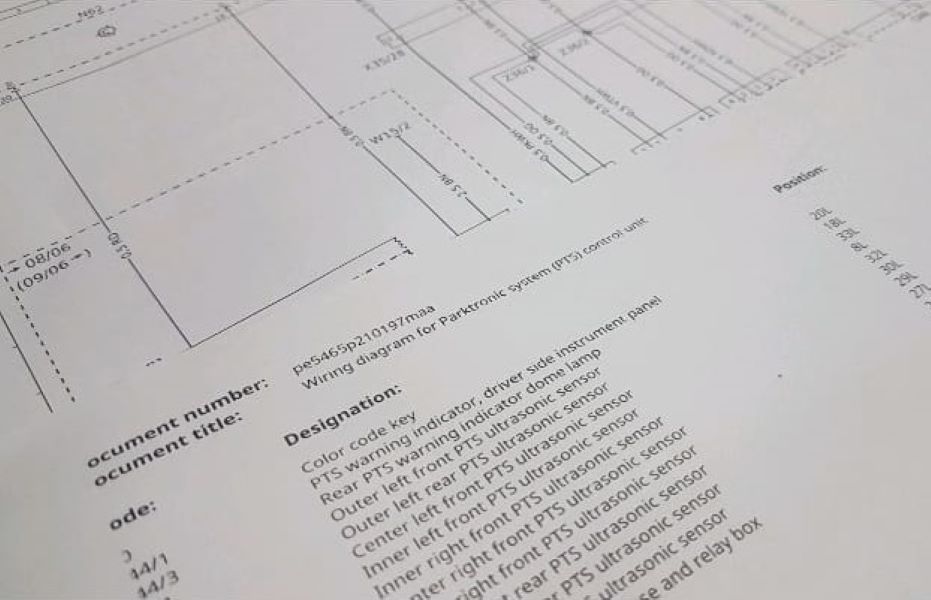




Leave a Reply